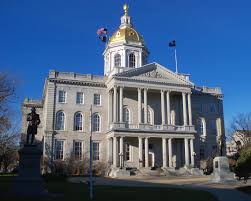
The revised bill, HB-602FN, has far fewer restrictions and may finally make it in the “Live Free or Die” state. The bill differs from most state legislative efforts in that it regulates the government more heavily than it regulates consumers.
New Hampshire citizens are notoriously protective of their liberties, asking each governor since the 1950’s to take “The Pledge” promising not to enact any new taxes. The drone bill under consideration largely ignores the FAA’s “Fact Sheet” designed to prevent states from creating new legislation, and limits the use of drones for any type of surveillance both by consumers and by law enforcement and government agencies.
The bill prohibits law enforcement from using drones “to engage in surveillance, to acquire evidence, or to enforce laws,” without a warrant, except in the case of a terrorist attack or a defined emergency. Details of the bill would require any aerial footage taken to be destroyed within a set period of time, and sets strict limits on the type of data that may be collected. The public is also prohibited from using drones to “harass or stalk another person” or to take any pictures when the person being photographed may have a “reasonable expectation of privacy.”
The latest effort by a state to regulate drones highlights two of the major conflicts between state legislation and the FAA when it comes to drone laws. First, the bill does provide for “Federal Preemption,” stating that “If federal law preempts any provision of this chapter, that provision shall not apply.” This could leave the laws in place only until the FAA passes regulation; or could require the FAA to regulate areas that it hadn’t thought of before in order to ensure consistency.
Secondly, NH takes a firm stand on where the private property line is when it comes to airspace. This is question most recently raised by the Drone Slayer case; the FAA maintains that it regulates airspace down to the soil. In New Hampshire, though, drones would be specifically prohibited from flying over private property at any height below 250 feet.
The legislation points out a main problem with the FAA’s delay on drone regulation – nature abhors a vacuum. In NH, the subject has been discussed for almost three years now, giving the federal government ample time to weigh in. In the absence of good federal guidelines, New Hampshire will join the number of state legislatures wasting time on crafting their own laws, creating the very “patchwork quilt” of state-based rules that the FAA wants to avoid.

Miriam McNabb is the Editor-in-Chief of DRONELIFE and CEO of JobForDrones, a professional drone services marketplace, and a fascinated observer of the emerging drone industry and the regulatory environment for drones. Miriam has penned over 3,000 articles focused on the commercial drone space and is an international speaker and recognized figure in the industry. Miriam has a degree from the University of Chicago and over 20 years of experience in high tech sales and marketing for new technologies.
For drone industry consulting or writing, Email Miriam.
TWITTER:@spaldingbarker
Subscribe to DroneLife here.